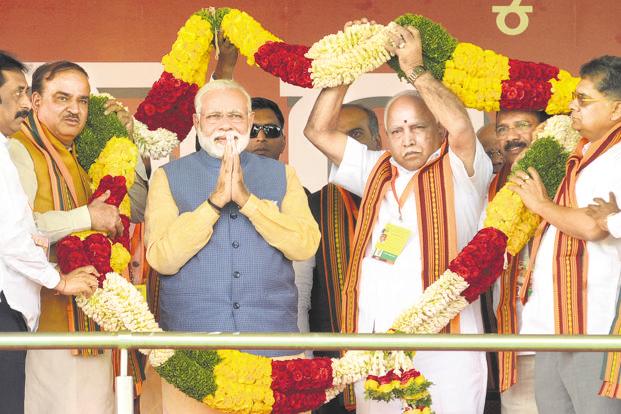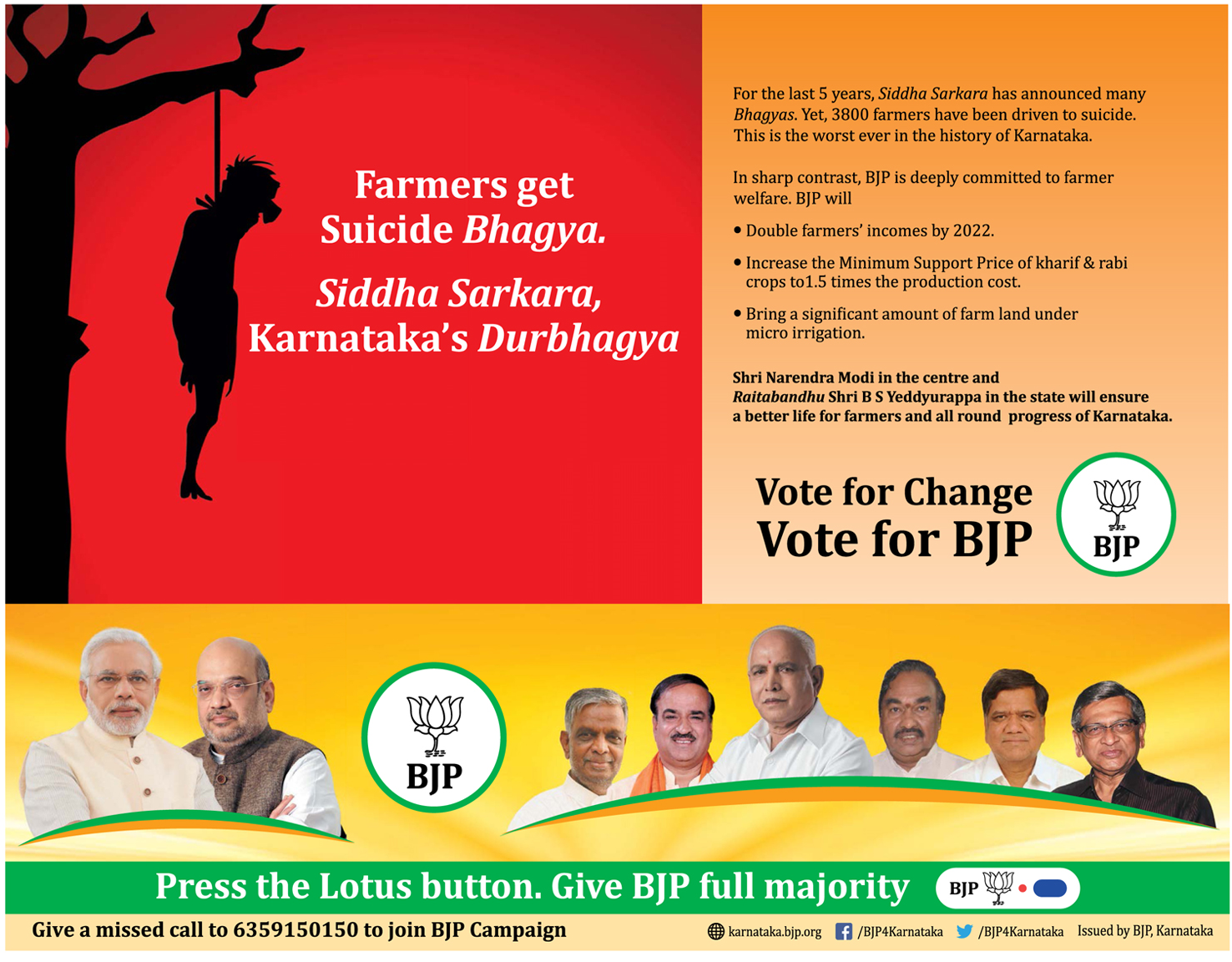Bangalore, and possibly other parts of Karnataka, woke up today to this print ad in newspapers. The ad is part of the BJP’s campaign for the Karnataka assembly polls. Each ad in this series targets a specific issue, and this one zeroes in on the suicide of farmers in the state. Even in the current backdrop of increasingly vicious political campaigns and counter-campaigns, this ad managed to shock – with its visual representation of a man hanging from a tree, against a blood-red background. No matter how hard-hitting you want your campaign to be, you don’t sanction such graphic violence in your advertisement. Or have the codes of visual representation changed?
There is no denying that widespread access to information in visual format has heightened our voyeuristic tendencies. When Shambhulal Regar hacked a Muslim labourer in Rajasthan last December and circulated the video of the act, it quickly became one of the most-watched videos on the internet. When an eight-year-old girl was gangraped and murdered in Kathua, the girl’s name was one of the top three searches on a popular porn site, making it clear that people expected the rape to have been recorded and disseminated. Daniel Berehulak’s Pulitzer-winning work depicted the Philippine government’s crackdown on drug-dealers in all its gut-wrenching goriness. For the last few years, almost every day, we are presented with newer and more horrific images of violence, mostly involving children, from Syria, Palestine, Myanmar, south Sudan, and a host of other conflict-ridden places. To what effect?
There are studies being conducted across the world as we speak on the psychological effect of the violent imagery that we are exposed to. The concluded ones have all reported higher risks of PTSD in the current scenario. For all the community standards and guidelines that the popular social media sites claim to have, their application has been erratic at best and deeply problematic at worst. And when circulated with the clear intention of polarizing and misleading the audience, these violent images are a potentially dangerous tool that can operate on a mass scale, thanks to the collective reach of the different media.
The run-up to the Karnataka elections has been largely about wresting space in the domain of multi-media ads. In another print ad by the BJP in the same series, the word ‘rape’ has been used prominently. It is possible to see a pattern. Is there some new user research insight – about the power of shocking images and sensational claims – that is being put to use here?
The Congress print ad that came out on the same day certainly appears tame in comparison. The accusations are all too real, and much talked-about – the multi-crore mining scam, and the BJP’s tall promises, such as Rs 15 lakh in every Indian’s bank account, 2 crore jobs, and Make in India. Where is that element of sensation? Where are those cues that would lead you to imagine that electing the other party will bring nothing short of doomsday upon you?
Contrast this with the BJP’s print ad campaign. Ogilvy’s brief seems to have been that verifiability must not come in the way of a jaw-dropping ‘fact’ or data. The ad in question talks about 3,800 farmer deaths in the state but does not clearly mention the period, yearly or otherwise, for which the data is relevant. If it is considered to be for the last five years (since the previous sentence mentions it), then the claim that it is the worst for the state is proved to be false. Just for scale and comparison, one might point out that in 2012, Maharashtra registered 3,786 farmer suicides, and Karnataka 1,876.

But wait, it gets better from here. In a written reply to the Rajya Sabha in March this year, the minister of state for agriculture, Parshottam Rupala, had said that farmer suicide data was not available for the years 2016 onwards. Wondering where the data could have come from, then? Don’t, because most people looking at such ads tend to take any data mentioned at face value.
The play on the word ‘bhagya’ (fortune) targets the common nomenclature used by chief minister Siddaramaiah for the string of welfare schemes he announced immediately after coming to power – from Anna Bhagya for free rice and pulses, and Ksheera Bhagya for free milk, to Laptop Bhagya for free laptops to college students, and Arogya Bhagya for free healthcare. Not a single number or dataset is provided to drive home the failure of these schemes, some of whose implementation have indeed been questionable.
Wondering why again? Perhaps because, for an audience brought up on a daily dose of horrifying visuals and sensational news, the silhouette of a hanging farmer, coupled with the figure of 3,800, should be able to do the trick. Truth and judgment be damned.

